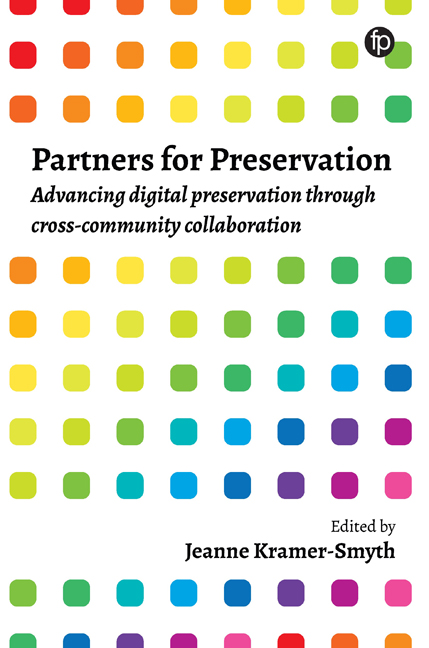Book contents
- Frontmatter
- dedication
- Contents
- List of figures and tables
- About the authors
- Foreword
- Introduction
- PART 1 MEMORY, PRIVACY AND TRANSPARENCY
- PART 2 THE PHYSICAL WORLD: OBJECTS, ART AND ARCHITECTURE
- 5 The Internet of Things: the risks and impacts of ubiquitous computing
- 6 Accurate digital colour reproduction on displays: from hardware design to software features
- 7 Historical building information model (BIM)+: sharing, preserving and reusing architectural design data
- PART 3 DATA AND PROGRAMMING
- Final thoughts
- Index
7 - Historical building information model (BIM)+: sharing, preserving and reusing architectural design data
from PART 2 - THE PHYSICAL WORLD: OBJECTS, ART AND ARCHITECTURE
Published online by Cambridge University Press: 08 June 2019
- Frontmatter
- dedication
- Contents
- List of figures and tables
- About the authors
- Foreword
- Introduction
- PART 1 MEMORY, PRIVACY AND TRANSPARENCY
- PART 2 THE PHYSICAL WORLD: OBJECTS, ART AND ARCHITECTURE
- 5 The Internet of Things: the risks and impacts of ubiquitous computing
- 6 Accurate digital colour reproduction on displays: from hardware design to software features
- 7 Historical building information model (BIM)+: sharing, preserving and reusing architectural design data
- PART 3 DATA AND PROGRAMMING
- Final thoughts
- Index
Summary
Introduction
Architecture, engineering and construction professional practices (e.g. architectural, engineering and contracting firms and practitioners) have pushed software developers to support standardised data formats and flows for importing, exporting and sharing building data. Recently, the widespread use and proliferation of object-oriented computer-aided design (CAD) packages together with the increased complexity and automation in the construction processes have fostered the uptake and exchange of 3D data during the collaboration process (Singh, Gu and Wang, 2011). Building information modelling (BIM) has facilitated this innovation in building design, construction and management. Through a single digital data repository, BIM shares and maintains an integrated digital representation of all building infor - mation throughout the entire project lifecycle (Gu and London, 2010). Creating a BIM ecosystem requires careful consideration for BIM-related products, processes and people to co-evolve (Gu, Singh and London, 2015). BIM supports powerful building data documentation and digitis - ation, and facilitates more effective com munication across different disciplines involved in the building lifecycle. It aims to break down the communication barriers among different stakeholders by maintaining only one consistent digital model for all disciplines through new processes of generating, managing and sharing building information. BIM research has been developed over decades and has largely addressed new building designs, while its applications on existing buildings are still under scrutiny (Volk, Stengel and Schultmann, 2014).
Historical BIM (HBIM) is a recent development of BIM focusing on historical buildings, and addresses the historical, cultural and social parameters that exist in this realm (Biagini et al. 2016; Quattrini, Pierdicca and Morbidoni, 2017). Most implementations of Historical BIM (HBIM) involve a parametric library, which is a collection of parametric geometries allowing mathematical modelling (through generations and variations) of shapes and objects, and a mapping system for capturing and translating survey data for heritage conservation (Maurice, McGovern and Sara, 2009), therefore it is also called ‘historic BIM’ or ‘heritage BIM’. HBIM extends the generic BIM approach to document and manage buildings that are historically important with significant heritage values. Because of this, most HBIM literature has focused on addressing the accurate, automated creation of a 3D digital model from survey data through advanced techniques such as terrestrial laser scanning and photogrammetry. Recent research developments on the translation of point clouds into building models is especially common in this domain (Baik, 2017; Chiabrando, Lo Turco and Rinaudo, 2017; Lopez et al., 2017).
- Type
- Chapter
- Information
- Partners for PreservationAdvancing Digital Preservation through Cross-Community Collaboration, pp. 123 - 144Publisher: FacetPrint publication year: 2018
- 1
- Cited by



